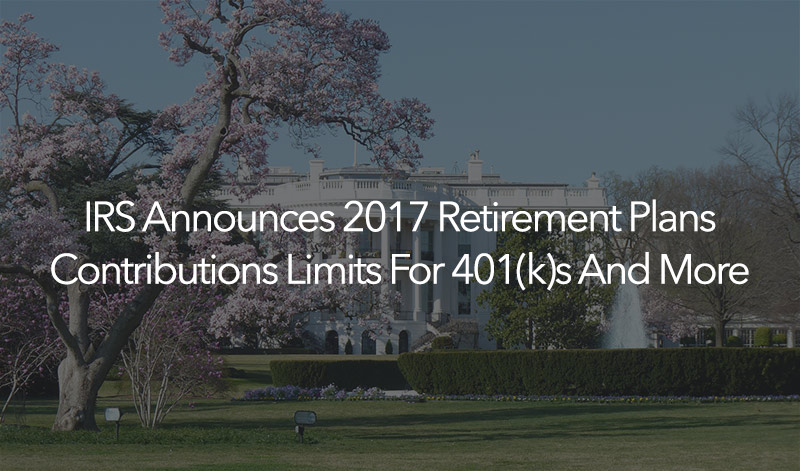The Treasury Department has announced inflation-adjusted figures for retirement account savings for 2017, and there are tweaks that help savers. Much stays the same, but there are increases in income phase-outs for IRA contributors, to the adjusted gross income limits for snagging the saver’s credit, and to the overall defined contribution plan limit—up to $54,000–a boost for self-employed and small business owners and workers who have the option of stuffing their retirement nest egg with aftertax dollars.
Congress bestows these tax breaks to encourage retirement savings. And the cost-of-living index changes give a little extra room for more savings. If you want to eke out every last opportunity for tax-advantaged savings, here are the details (spelled out in more details in Notice 2016-62). Forbes also has details on 2017 estate and gift tax limits and 2017 income tax rates, standard deductions and more.
401(k)s. The annual contribution limit for employees who participate in 401(k), 403(b), most 457 plans, and the federal government’s Thrift Savings Plan, is $18,000 for 2017, the same as in 2016. Note, you can make changes to your 401(k) election at any time during the year, not just during open enrollment season when most employers send you a reminder to update your elections for the next plan year.
The 401(k) Catch-Up. The catch-up contribution limit for employees age 50 or older in these plans also stays the same at $6,000 for 2017. Even if you don’t turn 50 until Dec. 31, 2017, you can make the additional $6,000 catch-up contribution for the year. If your plan lets you, you might want to frontload your catch-up contributions.
SEP IRAs and Solo 401(k)s. For the self-employed and small business owners, the amount they can save in a SEP IRA or a solo 401(k) is up from $53,000 in 2016 to $54,000 in 2017. That’s based on the amount they can contribute as an employer, as a percentage of their salary; the compensation limit used in the savings calculation also goes up from $265,000 in 2016 to $270,000 in 2017. For more on savings strategies if you have self-employment income, see How Entrepreneurs Can Get Big Tax Breaks For Retirement Savings.
After-tax 401(k) contributions. If your employer allows after-tax contributions to your 401(k), you also get the advantage of the $54,000 limit for 2017. It’s an overall cap, including your $18,000 (pre-tax or Roth) salary deferrals plus any employer contributions (but not catch-up contributions). For how to rollover after-tax 401(k) money into a Roth IRA, see Roth Road To Riches.
If would like to discuss aspects of your 401k questions with someone from our team, please call (865) 357-7370 or email us @ will@sdp-planning.com
PLEASE NOTE: The information being provided is strictly as a courtesy. When you access this link you are leaving our website and assume total responsibility for your use of the website you are linking to. We make no representation as to the completeness or accuracy of information provided at this website. Nor is the company liable for any direct or indirect technical or system issues or any consequences arising out of your access to or your use of third-party technologies, websites, information and programs made available through this website.

